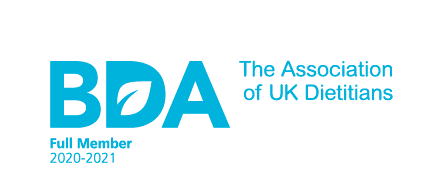Yes – it’s that time of year. The long, lazy summer days are now behind us and it’s back to school time once again.
The uniforms have been washed and ironed, new shoes bought and waiting by the front door; but what about the dreaded packed lunch?
As a working mum of three small children, I know only too well that thinking of healthy and yet exciting packed lunch ideas can be a daily challenge – it is all too easy to fall into the trap of including quick and easy (usually also high in fat and/or sugar) food….but these might not always be the best thing for our children to be eating. A brain that has been well-fed is more likely to lead to a good mood, good behaviour and therefore better learning as a result.
All of this might sound great so far, but for busy mums (and which mum isn’t busy?!), time is often of the essence.
It is with this in mind that I need to share the first tip of a healthy lunchbox…..
PREPARATION, PREPARATION, PREPARATION (I can’t stress this point enough!)
Being organised and well prepared enables us the time to make better choices and be able to choose from a wide range of nourishing foods, without the last-minute panic. Try to keep you fridge and cupboard well-stocked in the foods I am about to mention, and this will be half the battle.
So, what should we be including in our children’s lunch boxes?
FILL UP WITH FIBRE
Despite the constant media hostility towards carbohydrates (starchy foods), children really do need these in order to help keep them full, as well as to keep their energy levels up during the day.
Carbohydrate options may be:
- A variety of breads or rolls (preferably whole grain) to make different types of sandwiches
- Seeded crackers can be used in order to dip in to a protein (more on this below)
- Wraps (whole wheat if possible) can be used as a sandwich alternative
Pasta/couscous/rice, mixed with salad
INCLUDE PROTEIN
Protein-rich foods such as lean meat, chicken, fish, eggs, beans and pulses are needed by the body for growth and repair. Together with the carbohydrates listed above, they help to promote satiety (feeling of fullness), which is essential to keep little minds on learning, rather than on their tummies!
Protein options may be:
- Tuna/salmon/ egg with a small amount of mayonnaise with salad or in a sandwich
- Chicken or turkey slices
- A hard boiled egg – sliced
- Hummus – in a sandwich or with ‘dipping’ vegetable sticks and crackers
DAIRY FOR BONE HEALTH
The calcium that is found in dairy products is important to keep little bones and teeth strong. Try to include those with limited added sugars wherever possible, as well as the lower-fat options (children do not need to choose the fat-free options as they need some fat for growth, but the lower fat options are a good idea)
- Sliced cheese with salad or as a wrap or sandwich
- Cottage cheese with varying cut up fruit or vegetables. This can be accompanied by bread or crackers
- A small yogurt as dessert
- Low-fat fromage frais
ALWAYS INCLUDE FRUIT AND VEGETABLES
Fruit and vegetables are essential as part of a balanced diet, due to their vitamin, mineral and fibre content – all important to keep us healthy and prevent disease in later life.
Here are some tips to include more of these foods at lunchtime:
- Always slice vegetables and add to sandwiches – eg. Cucumber, lettuce and tomato
- Most kids love raw vegetable sticks – cucumber/carrots – these can be used to dip in hummus, cream cheese or cottage cheese
- Add fresh fruit as dessert – mixed fruit that has already been cut, such as strawberries, melon and apricots – may seem more enticing than a whole apple
REALLY SHORT ON TIME?
A great tip that I hear time and time again is to cook enough dinner so that there are leftovers for lunch. As soon as dinner is finished, package the food up into a plastic container and you’re ready to go”
REALLY SHORT ON TIME?
A great tip that I hear time and time again is to cook enough dinner so that there are leftovers for lunch. As soon as dinner is finished, package the food up into a plastic container and you’re ready to go”
OTHER SNACKS
Children always love ‘treats’ and there is nothing wrong with these, as part of a healthy, well-balanced diet. If you can, try to keep these as healthy as you are able to.
Some healthier option treats may be:
- Sugar-free jelly
- Fun-size chocolate bar
- Small bag of popcorn
- Snack-a-jacks
- Corn thins
It is important to keep offering healthy lunch box choices in a variety of ways, as children learn to eat what is familiar to them. Remember that it may take time to change your child’s food preferences to more healthy choices.
DON’T FORGET TO DRINK!
It is important to stay hydrated during the day and many of us forget to drink enough unless the weather is hot.
Most schools do not allow children to bring in juices or fizzy drinks (which is a good thing!), but if your child does not like water, try adding a small amount of sugar-free squash to give the water some flavour and make it more palatable. Most of all, remember to make it varied and enjoyable – if your child doesn’t like it, every day becomes a battle. Make something they enjoy and try the disliked option again at a later date. Consider getting your child involved in preparing and choosing the food that goes in to their lunch box – they are more likely to eat it if they have helped to make it.
GET AHEAD
If you can, get ahead the night before so you are ready to go in the morning – prepare lunch and snacks and store in the fridge overnight, then pack in an insulated lunchbox or bag with an ice-pack. It can be a good idea to stock up on a variety of different sized containers so you can separate out dips, salads, crackers, fruit and veg; this will help everything stay as crisp and fresh as possible.
For more information, recipes or tips, please Click Here.

